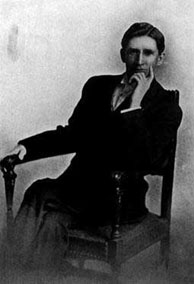
Julian Ashby Burruss - President, 1908-1919
Julian Ashby Burruss was named president of the State Normal and Industrial School for Women at Harrisonburg in 1908, shortly after the institution was founded by the Virginia General Assembly. The school opened its doors to its first student body in 1909 with an enrollment of 209 students and 15 faculty members. The first 20 graduates received diplomas in 1911. President Burruss' administration changed the name of the school to the State Normal School for Women at Harrisonburg in 1914 and the school received authorization to award bachelor's degrees in 1916. During this initial development of James Madison University, President Burruss established the campus plan and oversaw the construction of six buildings. He left the Normal School in 1919 to become President of Virginia Tech.

Dr. Samuel Page Duke - President, 1919-1949
During the 30 years of Dr. Samuel Page Duke's presidency, enrollment at the institution grew from 300 to around 1,400. Nine major campus buildings were constructed during his administration. In 1924, the institution became the State Teachers College at Harrisonburg and continued under that name until 1938 when it was named Madison College in honor of James Madison, the fourth president of the United States. In making his argument for the name change, President Duke pointed out that no other college honored Mr. Madison and the name would be appropriate if the institution ever became coeducational. In 1946, Dr. Duke's administration admitted men to Madison College as day students in regular sessions. Men had always attended summer sessions at the school, but this marked the first time men attended regular session classes.

Dr. G. Tyler Miller - President, 1949-1971
President G. Tyler Miller successfully convinced the Virginia General Assembly in 1966 to allow Madison College to build residence halls for men so the institution could become fully educational. He had first expressed the wish for Madison to become coeducational in the early 1950s but he was unsuccessful in that effort. Dr. Miller enlarged the institution's campus by 240 acres and constructed 19 major buildings. The Miller administration revamped the institution's curriculum, developing a full liberal arts program to join the teacher education program. In 1954, the expanding school received authorization to award master's degrees. During Dr. Miller's presidency, enrollment grew from 1,400 to 4,000.
